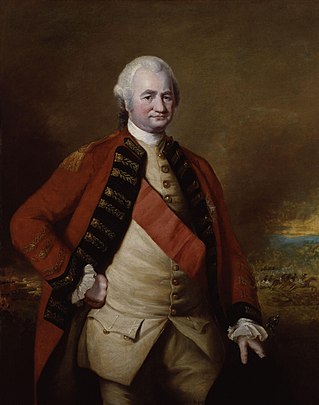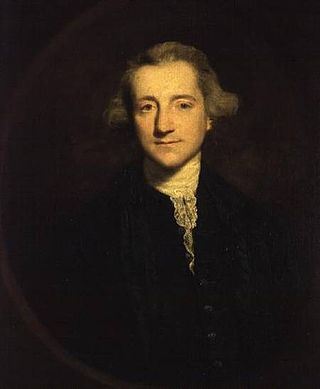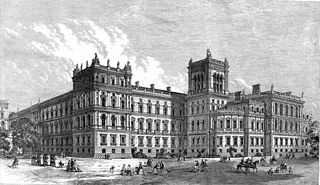Related Research Articles

The United East India Company, commonly known as the Dutch East India Company, was a chartered trading company and the first joint-stock company in the world. Established on 20 March 1602 by the States General of the Netherlands amalgamating existing companies, it was granted a 21-year monopoly to carry out trade activities in Asia. Shares in the company could be purchased by any citizen of the United Provinces and then subsequently bought and sold in open-air secondary markets. The company possessed quasi-governmental powers, including the ability to wage war, imprison and execute convicts, negotiate treaties, strike its own coins, and establish colonies. Also, because it traded across multiple colonies and countries from both the East and the West, the VOC is sometimes considered to have been the world's first multinational corporation.

A stock market crash is a sudden dramatic decline of stock prices across a major cross-section of a stock market, resulting in a significant loss of paper wealth. Crashes are driven by panic selling and underlying economic factors. They often follow speculation and economic bubbles.

The French East India Company was a joint-stock company founded in France on 1 September 1664 to compete with the English and Dutch trading companies in the East Indies. Planned by Jean-Baptiste Colbert, it was chartered by King Louis XIV for the purpose of trading in the Eastern Hemisphere. It resulted from the fusion of three earlier companies, the 1660 Compagnie de Chine, the Compagnie d'Orient and Compagnie de Madagascar. The first Director General for the Company was François de la Faye, who was adjoined by two Directors belonging to the two most successful trading organizations at that time: François Caron, who had spent 30 years working for the Dutch East India Company, including more than 20 years in Japan, and Marcara Avanchintz, an Armenian trader from Isfahan, Persia.

Warren Hastings was a British colonial administrator, who served as the first Governor of the Presidency of Fort William (Bengal), the head of the Supreme Council of Bengal, and so the first Governor-General of Bengal in 1772–1785. He and Robert Clive are credited with laying the foundation of the British Empire in India. He was an energetic organizer and reformer. In 1779–1784 he led forces of the East India Company against a coalition of native states and the French. In the end, the well-organized British side held its own, while France lost influence in India. In 1787, he was accused of corruption and impeached, but he was eventually acquitted in 1795 after a long trial. He was made a Privy Councillor in 1814.

Robert Clive, 1st Baron Clive,, also known as Clive of India, was the first British Governor of the Bengal Presidency. Clive has been widely credited for laying the foundation of the British East India Company (EIC) rule in Bengal. He began as a writer for the EIC in 1744 and established Company rule in Bengal by winning the Battle of Plassey in 1757. In return for supporting the Nawab Mir Jafar as ruler of Bengal, Clive was guaranteed a jagir of £30,000 per year which was the rent the EIC would otherwise pay to the Nawab for their tax-farming concession. When Clive left India in January 1767 he had a fortune of £180,000 which he remitted through the Dutch East India Company.
Corporate governance are mechanisms, processes and relations by which corporations are controlled and operated ("governed").

The Battle of Plassey was a decisive victory of the British East India Company, under the leadership of Robert Clive, over the Nawab of Bengal and his French allies on 23 June 1757. The victory was made possible by the defection of Mir Jafar, Nawab Siraj-ud-Daulah's commander in chief. The battle helped the British East India Company take control of Bengal in 1772. Over the next hundred years, they continued to expand their control over vast territories in the rest of the Indian subcontinent, including Burma.

The Bengal Presidency, officially the Presidency of Fort William in Bengal and later Bengal Province, was a province of British India and the largest of all the three Presidencies. At the height of its territorial jurisdiction, it covered large parts of what is now South Asia and Southeast Asia. Bengal proper covered the ethno-linguistic region of Bengal. Calcutta, the city which grew around Fort William, was the capital of the Bengal Presidency. For many years, the Governor of Bengal was concurrently the Governor-General of India and Calcutta was the capital of India until 1911.
Kolkata was a colonial city. The British East India Company developed Calcutta as a city by establishing an artificial riverine port in the 18th century CE. Kolkata was the capital of the British India until 1911, when the capital was relocated to Delhi. Kolkata grew rapidly in the 19th century to become the second most important city of the British Empire after London and was declared as the financial (commercial) capital of the British India. This was accompanied by the development of a culture that fused Indian philosophies with European tradition.

Henry Vansittart was an English colonial administrator, who was the Governor of Bengal from 1759 to 1764.

The India Office was a British government department established in London in 1858 to oversee the administration, through a Viceroy and other officials, of the Provinces of India. These territories comprised most of the modern-day nations of Indian Subcontinent as well as Yemen and other territories around the Indian Ocean. The department was headed by the Secretary of State for India, a member of the British cabinet, who was formally advised by the Council of India.

The history of Bengal is intertwined with the history of the broader Indian subcontinent and the surrounding regions of South Asia and Southeast Asia. It includes modern-day Bangladesh and the Indian states of West Bengal, Tripura and Assam's Karimganj district, located in the eastern part of the Indian subcontinent, at the apex of the Bay of Bengal and dominated by the fertile Ganges delta. The region was known to the ancient Greeks and Romans as Gangaridai, a powerful kingdom whose war elephant forces led the withdrawal of Alexander the Great from India. Some historians have identified Gangaridai with other parts of India. The Ganges and the Brahmaputra rivers act as a geographic marker of the region, but also connects the region to the broader Indian subcontinent. Bengal, at times, has played an important role in the history of the Indian subcontinent.

The Bengal Renaissance, also known as the Bengali Renaissance, was a cultural, social, intellectual, and artistic movement that took place in the Bengal region of the British Raj, from the late 18th century to the early 20th century. Historians have traced the beginnings of the movement to the victory of the British East India Company at the 1757 Battle of Plassey, as well as the works of reformer Raja Rammohan Roy, considered the "Father of the Bengal Renaissance," born in 1772. Nitish Sengupta stated that the movement "can be said to have … ended with Rabindranath Tagore," Asia's first Nobel laureate.

The Nawab of Bengal was the hereditary ruler of Bengal Subah in Mughal India. In the early 18th-century, the Nawab of Bengal was the de facto independent ruler of the three regions of Bengal, Bihar and Orissa which constitute the modern-day sovereign country of Bangladesh and the Indian states of West Bengal, Bihar and Odisha. They are often referred to as the Nawab of Bengal, Bihar and Orissa. The Nawabs were based in Murshidabad which was centrally located within Bengal, Bihar, and Odisha. Their chief, a former prime minister, became the first Nawab. The Nawabs continued to issue coins in the name of the Mughal Emperor, but for all practical purposes, the Nawabs governed as independent monarchs. Bengal continued to contribute the largest share of funds to the imperial treasury in Delhi. The Nawabs, backed by bankers such as the Jagat Seth, became the financial backbone of the Mughal court. During the 18th century, the Nawabs of Bengal were among the wealthiest rulers in the world.

The Great Bengal famine of 1770 struck Bengal and Bihar between 1769 and 1770 and affected some 30 million people. It occurred during a period of dual governance in Bengal. This existed after the East India Company had been granted the diwani, or the right to collect revenue, in Bengal by the Mughal emperor in Delhi, but before it had wrested the nizamat, or control of civil administration, which continued to lie with the Mughal governor, the Nawab of Bengal Nazm ud Daula (1765-72).

Mir Syed Jafar Ali Khan Bahadur was a commander-in-chief or military general who reigned as the first dependent Nawab of Bengal of the British East India Company. His reign has been considered by many historians as the start of the expansion of British control of the Indian subcontinent in Indian history and a key step in the eventual British domination of vast areas of pre-partition India.

The Great Crash, 1929 is a book written by John Kenneth Galbraith and published in 1955. It is an economic history of the lead-up to the Wall Street Crash of 1929. The book argues that the 1929 stock market crash was precipitated by rampant speculation in the stock market, that the common denominator of all speculative episodes is the belief of participants that they can become rich without work and that the tendency towards recurrent speculative orgy serves no useful purpose, but rather is deeply damaging to an economy. It was Galbraith's belief that a good knowledge of what happened in 1929 was the best safeguard against its recurrence.
Harry Verelst was a colonial administrator with the British East India Company and the governor of Bengal from 1767 to 1769.

The Battle of Chinsurah, also known as the Battle of Biderra or the Battle of Hoogly, was a military engagement which took place on 25 November 1759 near Chinsurah during the Seven Years' War. It took place between a force of British troops mainly of the British East India Company and a force of the Dutch East India Company which had been invited by the Nawab of Bengal Mir Jafar to help him expel the British and establish themselves as the leading commercial company in Bengal.
Peter Gaussen (1723–1788) was Governor of the Bank of England from 1777 to 1779.
References
- ↑ Kurtulmuşlar, Mevza; Kıral, Halis (2022), Açikgöz, Bernur (ed.), "Bengal Bubble (1669–1772) and East India Syndrome (1669– –)", Black Swan: Economic Crises, Volume I, Accounting, Finance, Sustainability, Governance & Fraud: Theory and Application, Singapore: Springer Nature, pp. 33–44, doi:10.1007/978-981-19-5252-4_3, ISBN 978-981-19-5252-4 , retrieved 2023-09-04
- ↑ Robins, Nick (2007). "This Imperious Company: The English East India Company and its Legacy for Corporate Accountability". The Journal of Corporate Citizenship (25): 31–42. doi:10.2307/jcorpciti.25.31. ISSN 1470-5001.